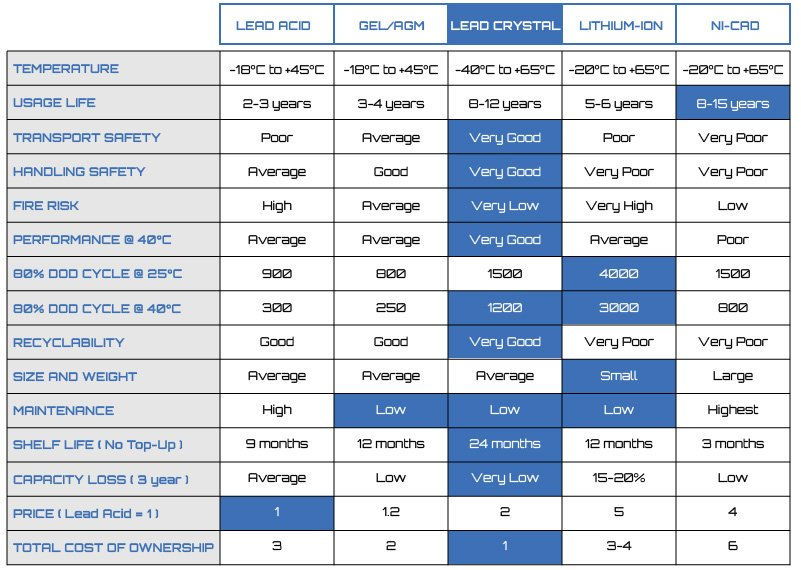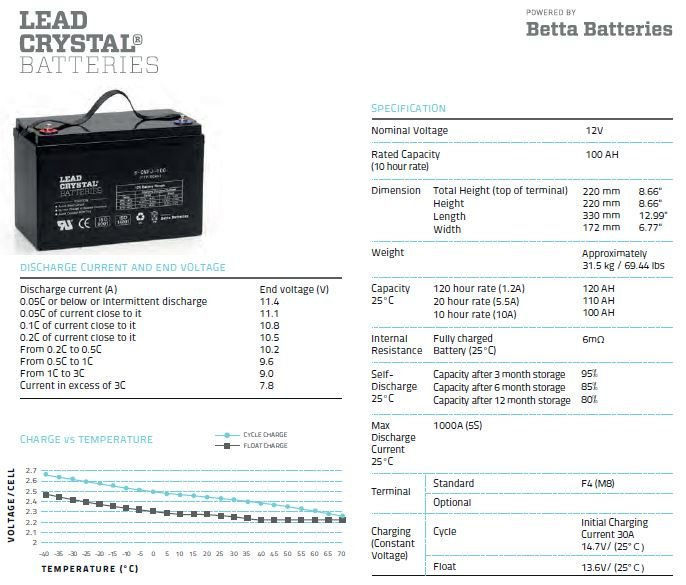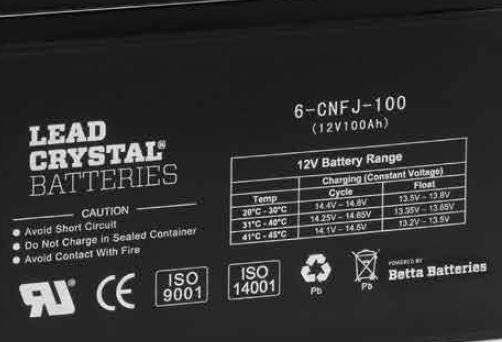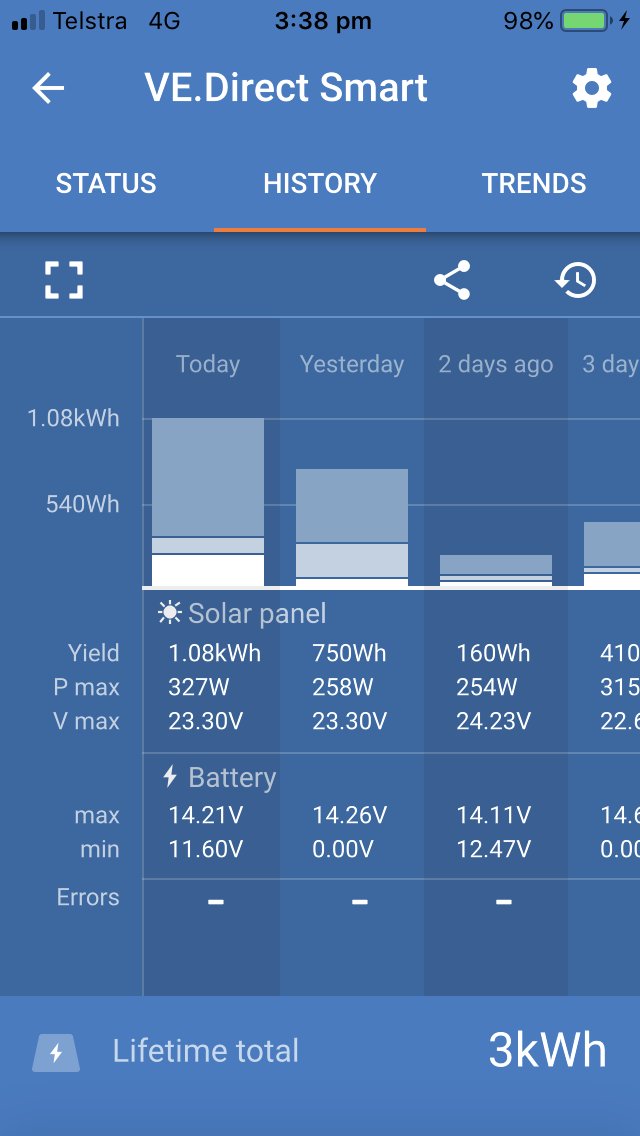condor22
Mike
Jaros, from what I can see;
Comparrison -
The Lithium and LC have a usable 100AH, where the AGM is limited to about 25AH to get a similar life. So you would need 4 AGMs for the same usable @ approx $1,600, a lot more real estate and weight. So taking the AGM out of the mix and comparing Lithium to LC.
Looking at cost, the LiFePO4 is almost 3 times the price for a similar DOC capability. Here's a comparison chart (albeit from the LC web site)

I get a rough idea that a Li will cycle a bit more than double a LC. So lifespan comparison is 2 x LC to = 1 x Li = $1,100 to $1,549.
Weight - Lithium about 1/3 of an LC of similar AH.
The other thing to consider if changing to Lithium is; If your current 240VAC, DC-DC or Solar charging gear does not include Lithium, they will need replacing. Whereas if you currently have suitable gear for an AGM it will also suit the LC batteries and not need replacing.
"Horses for courses" - From my perspective (and I might add SWMBO) I've already invested a fair bit in what I have. The AGM in the Van and the GEL in the 4x4 work, do what I want and are in good condition. So when either of the batteries fail, I'll replace with a LC of the same AH. That way it will only be $150 or so more for twice the output and existing chargers will do the job.
If I were setting up from scratch, I'd go Lithium for sure, providing the boss approved, lol.
Not a perfect comparison, but, covers key points I hope..........
- $1,549 for a 100AH - Specs say 2000 cycles @ 100% DOC[/*]
- The Beta 100AH lead crystal (LC) is about $549 - Specs say 8-12 yrs useful life and can be 100% DOC[/*]
- A Full River Blue AGM 105AH is a bit over $400 - I got 10 yrs out of my last one @ approx 25% DOC[/*]
Comparrison -
The Lithium and LC have a usable 100AH, where the AGM is limited to about 25AH to get a similar life. So you would need 4 AGMs for the same usable @ approx $1,600, a lot more real estate and weight. So taking the AGM out of the mix and comparing Lithium to LC.
Looking at cost, the LiFePO4 is almost 3 times the price for a similar DOC capability. Here's a comparison chart (albeit from the LC web site)

I get a rough idea that a Li will cycle a bit more than double a LC. So lifespan comparison is 2 x LC to = 1 x Li = $1,100 to $1,549.
Weight - Lithium about 1/3 of an LC of similar AH.
The other thing to consider if changing to Lithium is; If your current 240VAC, DC-DC or Solar charging gear does not include Lithium, they will need replacing. Whereas if you currently have suitable gear for an AGM it will also suit the LC batteries and not need replacing.
"Horses for courses" - From my perspective (and I might add SWMBO) I've already invested a fair bit in what I have. The AGM in the Van and the GEL in the 4x4 work, do what I want and are in good condition. So when either of the batteries fail, I'll replace with a LC of the same AH. That way it will only be $150 or so more for twice the output and existing chargers will do the job.
If I were setting up from scratch, I'd go Lithium for sure, providing the boss approved, lol.
Not a perfect comparison, but, covers key points I hope..........








